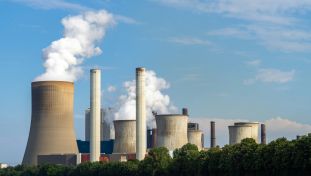
Japan and the Philippines are experiencing a wave of anxiety as a decades-old manga gains renewed attention for its chilling prediction of a major earthquake and tsunami said to strike on July 5, 2025 4:18 AM.
The manga, titled Watashi ga Mita Mirai ("The Future I Saw"), was first released in 1999 and reprinted in 2021. Ryo Tatsuki wrote about visions of a catastrophic disaster in July 2025, stating that "the ocean floor between Japan and the Philippines will crack," and that tsunami waves would be three times higher than those of the devastating 2011 earthquake and tsunami.
Public Fear and Economic Impact
As the supposed date approaches, fear has spread rapidly across Japan and neighboring countries. Many tourists from Hong Kong, China, Taiwan, and South Korea have canceled their travel plans, resulting in a sharp decline in flight bookings and hotel reservations, particularly in southwestern Japan, Travel and Tour World reported. Airlines have reduced routes, and tourism-dependent prefectures are reporting significant losses.
Some travel agencies estimate bookings for late June to early July have fallen by half, with economic analysts warning that continued panic could cost Japan billions of yen in lost tourism revenue if confidence is not restored soon.
Read more: Triangle of Life Earthquake Survival Theory a Hoax? Does It Work Better Than Drop, Cover, & Hold?
What Scientists Say
Seismologists and disaster preparedness experts are urging the public to remain calm. They emphasize that earthquake prediction is not scientifically possible, as there is currently no technology that can forecast the exact date, location, or magnitude of an earthquake, South China Morning Post reported.
While Japan faces the genuine long-term risk of a megaquake along the Nankai Trough, which experts say could occur within the next 30 years, this is very different from predicting a specific day. The Nankai Trough earthquake, if it occurs, is expected to cause major damage and casualties, but its timing remains uncertain within a broad timeframe rather than any precise date.
Authorities are advising residents and visitors to focus on practical earthquake preparedness instead of fearing unverified predictions.
Faultlines in Japan: What's Happening Beneath the Surface
Japan is situated in one of the most seismically active regions in the world, where multiple tectonic plates converge, creating complex fault lines and significant earthquake risks.
In 2015 and again in 2020, scientists observed a phenomenon known as slow-slip earthquakes along Japan's Nankai Trough. Unlike typical earthquakes that release energy suddenly and violently, these quakes occur gradually over days or weeks, slowly moving fault lines without immediate destruction.
Using advanced borehole observatories, researchers drilled hundreds of feet into the seabed to collect real-time data on how these faults behave beneath the ocean floor. One key finding was that a 20-mile stretch along the fault showed significant slow tremors, with movement starting approximately 30 miles off the Kii Peninsula and creeping towards the deep ocean trench.
Josh Edgington, who analyzed the data in the study from the University of Texas, described these events as "like a ripple moving across the plate interface." While slow-slip earthquakes do not directly cause major devastation, they provide critical insights into the behavior of faults in subduction zones and their potential to trigger tsunamis.
Over 900 Earthquakes Swarm Japan
More than 900 earthquakes have struck Japan's remote Tokara Islands since June 21, leaving residents anxious as tremors continue with no clear end in sight.
On Wednesday, a magnitude 5.5 quake was recorded, prompting the Japan Meteorological Agency to hold an emergency press conference. Ayataka Ebita, director of the agency's earthquake and tsunami observation division, confirmed that seismic activity has been "very active" in the seas around the island chain, with over 900 tremors reported as of Wednesday afternoon. That number surpassed 900 by Thursday, according to The Guardian.
Authorities have advised residents to prepare for potential shelter or evacuation, warning that stronger earthquakes could strike the region. Already, 89 residents on one small southern island have been told to evacuate as a precaution.
The Tokara Islands, located along the Pacific Ring of Fire, are no strangers to seismic events. Japan experiences approximately 1,500 earthquakes annually due to its position on several converging tectonic plates. However, the ongoing earthquake swarm has heightened fears among locals about a potential larger quake to come.
Meanwhile, in Southwest Japan, an earthquake swarm continues near Ryukyu Island close to Kagoshima-ken. Recent tremors have reached magnitudes of 5 and above, indicating that stress energies are increasing and a strong earthquake is possible.
This seismic activity is driven by pressure within the subduction zone, where the Okinawa Plate, a minor tectonic plate forming the Ryukyu Island arc, interacts with the larger plates. Specifically, the Philippine Sea Plate is subducting northwestward beneath the Eurasian Plate along the Ryukyu Trench, creating conditions that lead to frequent earthquakes and tectonic strain in the region.
Heads UP 📍Japan🚨 The earthquake swarm in Ryukyu Island near Kagoshima-ken in Southwest Japan continues. The stress energies are increasing with an earthquake magnitude of 5+. This means a strong...
Author Clarifies Intentions
The manga's author has distanced herself from literal interpretations of her work, explaining that she is not a prophet and did not intend for her visions to cause panic. However, her followers point out that she allegedly predicted the 2011 Tōhoku earthquake, adding fuel to current fears despite official reassurances.
Is a Megaquake Coming?

As Japan and the Philippines await July 5, many are feeling tense, with social media filled with videos and posts speculating on the possible disaster. However, the scientific community continues to remind everyone that preparedness based on real data, not superstition, remains the most effective way to stay safe in an earthquake-prone country.
For now, while the manga's prophecy may have caused a psychological quake, experts agree that there is no evidence a megaquake will strike Japan. The real focus should remain on ongoing disaster readiness and calm vigilance.
© 2026 ScienceTimes.com All rights reserved. Do not reproduce without permission. The window to the world of Science Times.











